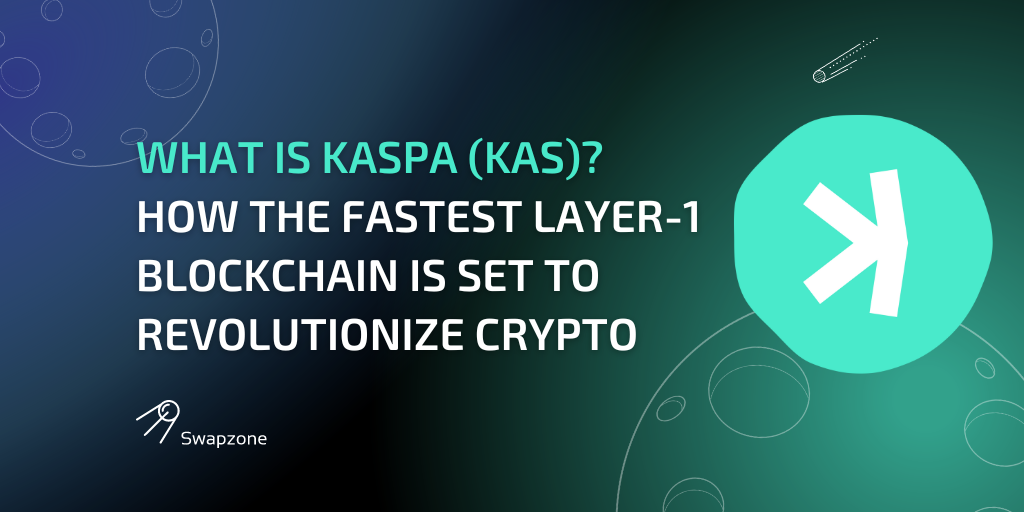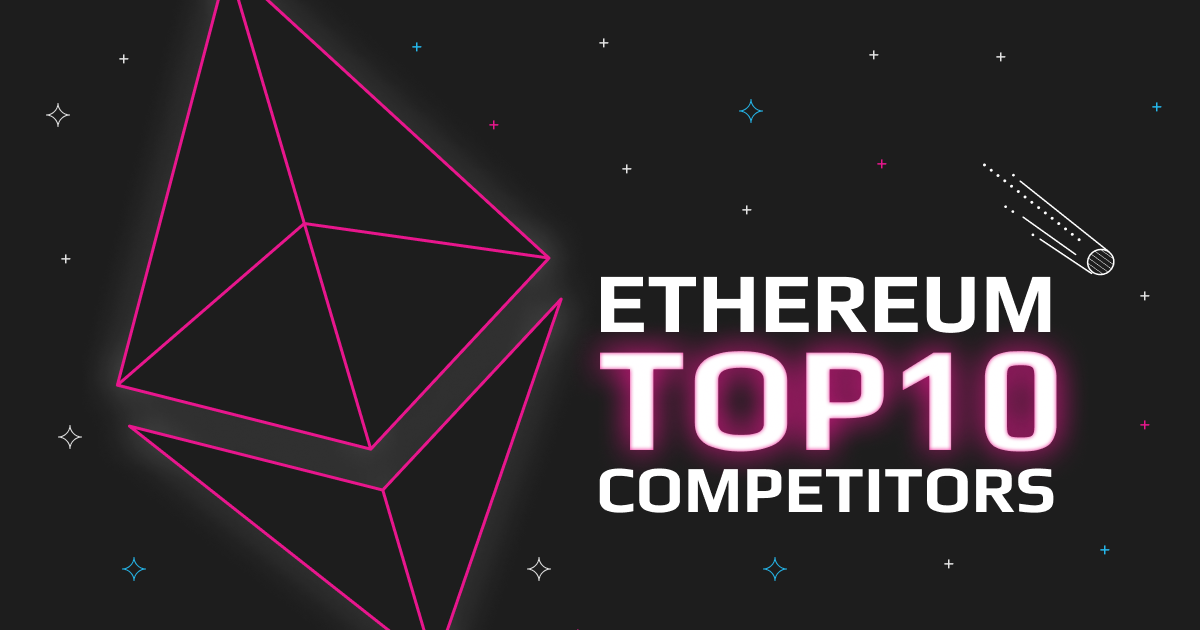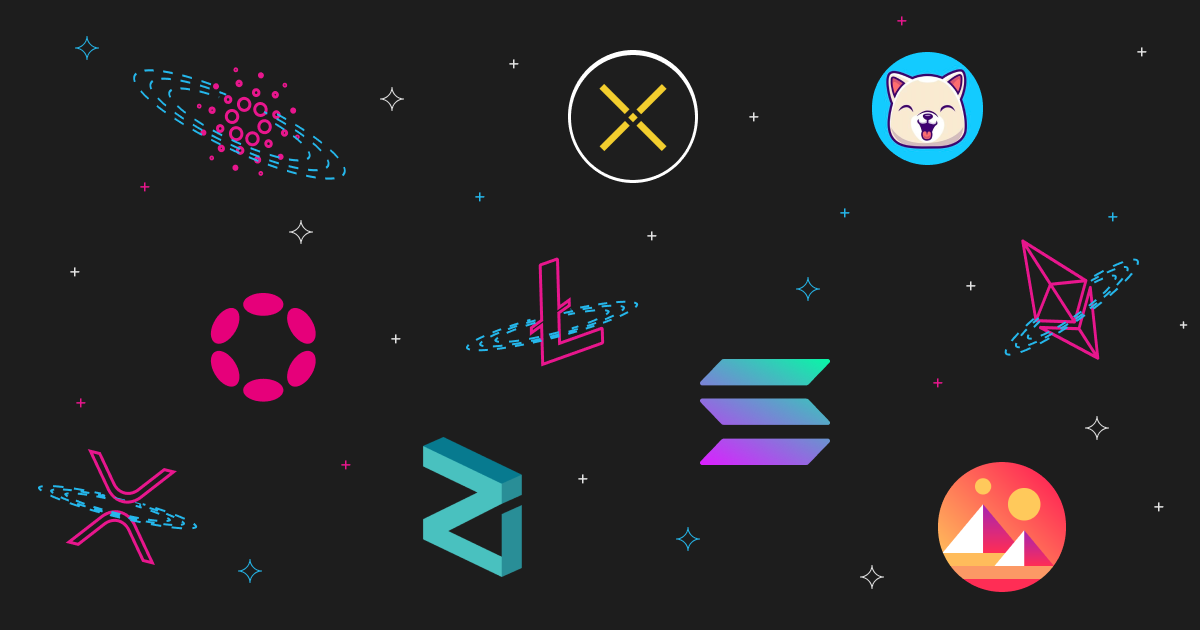If you’re tired of slow transaction speeds and scalability issues, then get ready for a revolutionary solution! Kaspa (KAS) is here to transform the crypto landscape with its lightning-fast Layer-1 blockchain. But what exactly is Kaspa, and how does it plan to achieve such remarkable speed?
In this blog post, we’ll dive into the exciting features of Kaspa (KAS) and explore its innovative GhostDAG technology. Buckle up as we take you on a journey through the future of digital currency!
What is Kaspa (KAS)?
Swapzone users love Kaspa and it’s no wonder why!
At its core, Kaspa (KAS) is a groundbreaking Layer-1 blockchain that aims to tackle the long-standing challenges faced by traditional cryptocurrencies. Developed with speed and scalability in mind, Kaspa sets out to revolutionize the way we transact and interact within the digital realm.
Unlike many other blockchains, Kaspa implements an innovative technology known as GhostDAG (Directed Acyclic Graph). This technology allows for parallel processing of transactions, resulting in lightning-fast confirmation times and increased throughput.
Say goodbye to those frustratingly slow transaction speeds that have plagued many popular cryptocurrencies!
Learn about GhostDAG – A Primary Technology Behind Kaspa
With Kaspa’s unique architecture, users can expect near-instant confirmations without compromising on security or decentralization. In fact, it is estimated that Kaspa is capable of propagating at 9,000 transactions per second / 32 blocks per second, making it the fastest decentralized network thus far.
By utilizing the world’s first BlockDAG structure instead of a linear chain, multiple branches can be created simultaneously, enabling massive scaling potential while maintaining robustness.
But what makes Kaspa truly stand out is its commitment to interoperability. The platform is planning to implement support for smart contracts and decentralized applications (dApps), opening up endless possibilities for developers and users alike.
At the moment, Kaspa is already providing a flexible environment for merchants and shoppers due to its high speed, low fees, top-tier security, and innovative blockchain trilemma solution, etc.
In addition to its technical prowess, Kaspa boasts an active community of enthusiasts who are passionate about driving adoption and innovation forward. It’s not surprising that the price of KAS shows a positive reaction:
Data provided by CoinMarketCap
So if you’re tired of sluggish blockchains hindering your crypto journey or simply seeking a faster alternative with boundless potential, keep your eyes on Kaspa (KAS).
It’s time to embrace the power of speed and witness firsthand how this game-changing blockchain is set to reshape our digital landscape!
What is the roadmap for Kaspa?
With ongoing development efforts focused on enhancing user experience and expanding utility through partnerships with various industries, it’s clear that Kaspa (KAS), the fastest Layer-1 blockchain, has big plans for the future.
First and foremost, Kaspa aims to enhance its infrastructure by focusing on solving the infamous blockchain trilemma, which strives to achieve optimal levels of security, decentralization, and scalability simultaneously.
By using the unique mechanism of BlockDAG, Kaspa is set to revolutionize crypto space. BlockDAG is, in fact, an evolved blockchain. Instead of rejecting orphan blocks, Kaspa allows them to coexist and orders them in consensus.
In terms of technical upgrades, Kaspa plans to introduce features like virtual machine support, smart contracts, and cross-chain interoperability. These enhancements will enable developers to build decentralized applications (dApps) on the platform and foster a vibrant ecosystem. Kaspa’s short-term plans include the launch of merchant tools and wrapped Kaspa (wKAS).
Additionally, community engagement is a top priority for the project. It is of major importance to Kaspa to highlight the fact that KAS has no entity – just like Bitcoin (BTC).
The roadmap for Kaspa holds immense potential for growth and development. As it continues to push boundaries in security, scalability and decentralization while fostering community involvement, we can expect great things from this project in the future!
Read Kaspa’s full story – in the project’s own words:
How can I swap Kaspa (KAS) with Swapzone?
Interested in swapping your Kaspa (KAS) tokens? Look no further than Swapzone, a user-friendly platform that allows you to exchange cryptocurrencies quickly and securely.
With Swapzone, you can seamlessly trade your KAS tokens for other digital assets without the hassle of navigating multiple exchanges – and at the best rates on the web.
To get started with the swap process, simply visit the Swapzone website and select “Kaspa” as your sending currency. Choose the desired receiving currency from their extensive list of supported coins. For instance, you can swap BTC for KAS.
The platform will then display a list of available exchange options along with their respective rates and fees. Once you’ve chosen an exchange provider that meets your requirements, click on it to proceed with the swap.
You’ll be directed to the selected exchange’s website where you can complete the transaction by following their instructions. It’s worth noting that each partner exchange has its own set of terms and conditions, so make sure to review them before finalizing any transactions.
Swapzone aims to provide users with a seamless swapping experience by aggregating information from various exchanges into one convenient interface. This not only saves time but also helps ensure competitive rates for all swaps.
So if you’re looking to swap your Kaspa tokens efficiently and securely, give Swapzone a try and join thousands of other users, who are already swapping KAS!
Conclusion
Kaspa (KAS) is an attractive layer-1 blockchain that aims to revolutionize the world of cryptocurrency. With its innovative features and focus on scalability, security, and decentralization, Kaspa has the potential to overcome many of the limitations faced by existing blockchain platforms.
As we witness ongoing advancements in blockchain technology, it’s clear that projects like Kaspa (KAS) are paving the way for a more inclusive and accessible financial future. With its speed, scalability, and commitment to innovation, Kaspa has positioned itself as a formidable player in the evolving landscape of cryptocurrencies.
Let’s keep an eye on this groundbreaking project as it continues to disrupt traditional paradigms and drive widespread adoption of blockchain technology across industries worldwide.















